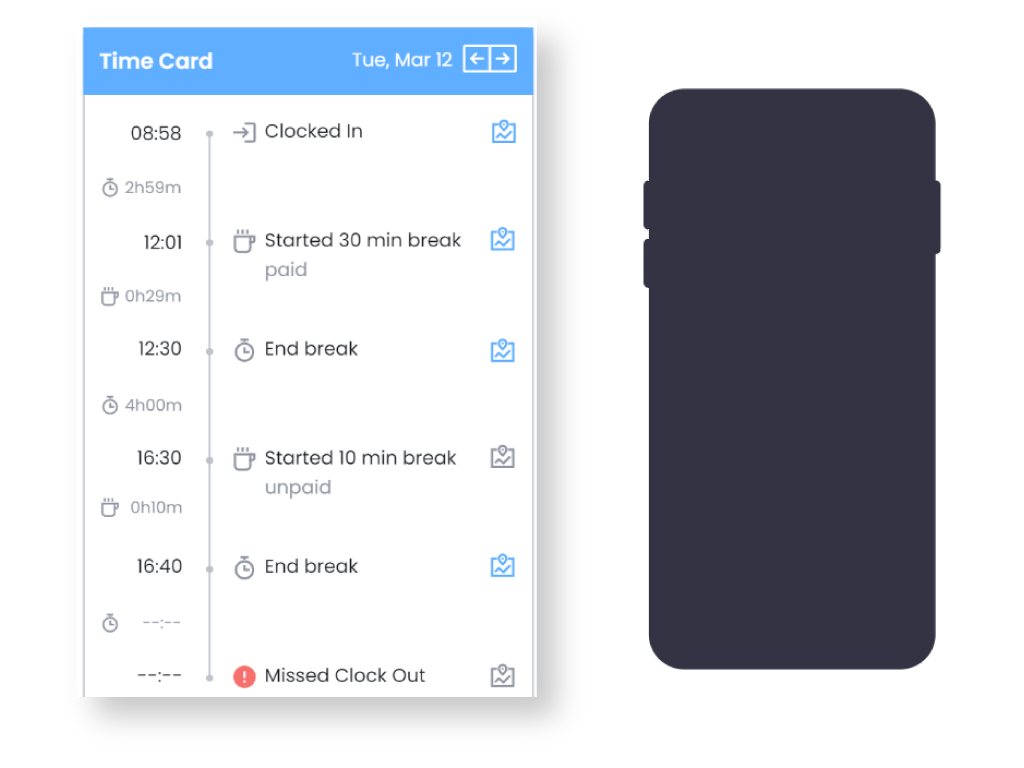How It Works:
Recording Hours: Employees record their working hours on timecards, either manually or through digital systems such as time-tracking software or punch clocks.
Tracking Overtime and Breaks: Timecards often include information on overtime hours worked and breaks taken, ensuring accurate compensation and adherence to employment laws.
Importance:
Payroll Accuracy: Timecards serve as the basis for calculating employees’ wages, ensuring accuracy in payroll processing.
Compliance: They help companies comply with labor laws by documenting employees’ work hours, breaks, and overtime, thereby preventing legal disputes related to wage and hour regulations.
Integration and Software Variants:
Employee timecards can be integrated into comprehensive workforce management systems, allowing for automated timekeeping, scheduling, and reporting. This integration streamlines administrative tasks and enhances efficiency in managing employee work hours.
Employee timecards are essential tools for both employees and employers, facilitating transparent record-keeping and ensuring fair compensation for work performed.


